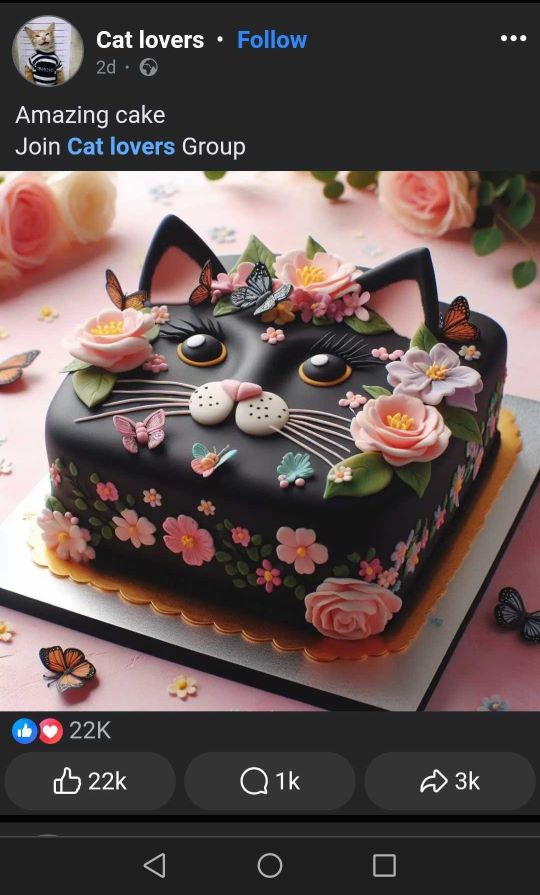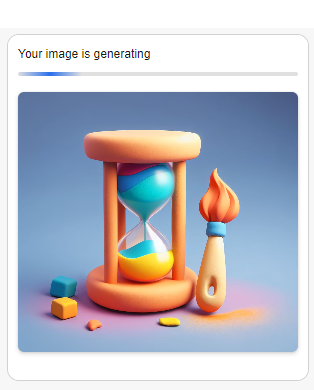Image generation in everyday AI
In late 2022 we looked at what was available to try out image generation, we recommended a few popular demo tools to try including Hugging Face’s Stable Diffusion demo, Dream Studio and Dalle-2. As with text-generating tools, we’ve since seen a huge increase in both the capability and availability of image-generating tools over the 18 months.
Perhaps the easiest way to try image generation now is through one of the major chatbot tools, which are increasingly adding image generation as a feature. Microsoft Copilot is perhaps the most accessible, offering image generation using the DALL E 3 model for free to all users. DALL E 3 is also available through ChatGPT but only for plus subscribers. We’ve compared these tools recently in our advice on licensing options for generative AI.
Notably, Google recently implemented image-generating capabilities to its Gemini tool which had to be disabled when users found it generated misleading and offensive imagery, particularly related to representations of culture and race. Google has advised the feature is only temporarily disabled while they resolve these issues.
Other existing design software such as Adobe Firefly, Canva and more have integrated tools to generate and manipulate images. Meanwhile, standalone paid services like Midjourney are available and continue to accrue users. Overall, image generation is fast becoming a standard feature of the “everyday AI” landscape, and multimodal AI was listed as one of Microsoft’s big AI trends to watch this year.
Many of the concerns around image generation echo those of text generation – copyright/IP issues, hallucinations, and perpetuations of bias. These concerns are no longer theoretical though, as the availability of image generation has increased, real instances of these issues are occurring, and it’s a good time to take notice as we consider the role of these tools in education.
On social media
If you use social media regularly, you’ve very likely seen at least one AI-generated image this week, and likely a whole lot more. Over the last few months, it’s been difficult not to notice the influx of AI-generated images on social media usually coming from recommended or promoted accounts (depending on the platform) which consist solely of reposted images, many of which are easily recognisable as AI generated though rarely credited as such.

The ‘AI look’ isn’t always easy to spot, and as with text generation to crafting of the prompt can greatly improve the output. However, quality doesn’t seem to be a huge concern when many of these images are being created for use on social media and intended to be viewed briefly, hoping to capture a bit of the user’s attention as they scroll past.
There is much discussion around the potential impacts that this glut of AI-generated imagery across social media may be having. Europol have warned that generative AI is enabling an increase in fraud on social media and dating apps. With this saturation of AI-generated imagery there is a need for users to be more critical of this content as it is quickly becoming another vehicle for pushing scams and advertisements to users. Interestingly, in looking at these AI posts we saw that among the thousands of comments a handful of users were sharing warnings like the ones below:

Interestingly, Meta have recently announced they are working with industry partners to label images created using AI tools, such as Meta AI, Google, OpenAI, etc. The labels will be applied to images posted on Facebook, Instagram and Threads in the coming months. It will be interesting to see whether this impacts how users perceive these posts when they know the content is AI-generated and whether this changes what seems to be the increasing number AI-generated posts.
From companies?
We’ve also seen AI-generated images incorporated into marketing by large companies too, and in some cases there has been significant backlash from the public. At the end of December ID@Xbox (Independent Developers @ Xbox) X account made a post featuring an AI-generated image of children playing in the snow to promote indie games. Though the image didn’t credit AI, viewers quickly picked up on some of the uncanny telltales of AI-generated images from the children’s incomplete faces to the odd wires looping around the image. In this case, the use of generative AI to promote indie games was seen as being in particularly poor taste as using an AI tool rather than paying a human artist for the same work feels antithetical to supporting artists and indie developers. The response to the image was hostile enough that ID@Xbox deleted the post entirely.
Is context all that matters?
Microsoft (who own Xbox) have also been illustrating some of their marketing blogs with AI-generated images for a little while now. But this hasn’t prompted much attention, concern or backlash, though the images similarly contain plenty of those uncanny AI features.

There is certainly much more work to be done to understand people’s perceptions of AI-generated images now that those images are of considerably higher quality and complexity than ever before. There are more recent studies exploring this fascinating area to check out, including this recent report exploring the factors that might cause negative reactions to AI-generated artworks. Interestingly, participants in that study preferred AI-generated images when they did not know the source was AI and exhibited some negative bias towards images, they were told were AI generated whether this was true or not.
It’s evident already that context matters when appraising a person or organisation using AI-generated images. We will have to consider therefore, what might be the educational contexts where image generation is inappropriate?
Perpetuating biases
We’ve also discussed bias before and the fundamental issue that groups who are not well represented in the dataset will not be well represented in the outputs of generative AI tools. Unfortunately, there are now many real examples of the bias in AI-generated images causing issues.
Disability rights groups have drawn attention to the failure of popular tools to produce accurate images of disabled people. Leo Rodman provides some helpful advice on improving the outputs as a user but emphasises that the real solution lies in starting with better, more diverse datasets to begin with. For now, though, when we use many of these popular tools we will run the risk of creating content that can perpetuate stereotypes of groups that are already underrepresented.
The saturation of AI-generated images has also included art which tries to emulate the styles of indigenous artworks. In January this year, it was noticed that a huge increase in art uploaded to Adobe Stock in the style of indigenous Australian artists were evidently AI-generated pieces. The volume of these works has the potential to dilute the representation of actual indigenous artwork while also drawing income away from actual indigenous artists. The artists behind the genuine artworks that these models have been trained on will also, like many artists, not have been paid for the use of their work. As many institutions are working toward decolonising education in the UK, the potential for generative AI to perpetuate colonial attitudes must be considered.
Copyright controversies
Some of the most contentious issues surrounding generative AI right now are those concerning copyright and intellectual property. AI companies have used copyrighted works in the training data for their models, and there are now numerous court cases in progress as both individual creators and publishers sue them.
Notable ongoing examples include New York Times v OpenAI in the US, and here in the UK Getty Images v Stability AI which will proceed to a trial this year. A recent judgement in a Chinese court has also been publicised as perhaps being the first to rule that an AI company (unnamed) was in breach of copyright.
It will be key to watch how these issues are resolved in the UK and within any upcoming regulations around AI. Notably a recent report from a House of Lords committee has urged the government to support copyright holders on this matter. We will have to see how this is balanced with the government’s proposed pro innovation approach to AI regulation.
There are ongoing campaigns and efforts from a variety of individual activists, groups and larger organisations lobbying to protect creatives from the impacts of generative AI. Concerns extend beyond copyright also, into protecting creatives and the industry going forward in a world where generative AI could be used to replace or radically change people’s jobs. For a detailed look at the range of these issues, this interview with concept artist Karla Ortiz is an insightful read into artists perspectives and experiences right now.
Tools to protect artist’s works have also been developed. The Glaze project, created and run by staff and graduate students from University of Chicago, have created two tools to help artists protect their art against AI. Their first tool Glaze, released in March 2023, is designed to ‘cloak’ a digital image to prevent an AI model from learning the style of that image to protect an artists unique style being learned and reproduced by an image generator. Their second tool, Nightshade, goes further and is able to not only cloak the image style but present it as a completely different image to the model in order to disrupt its training.
For ourselves as users of these tools there is a question as to whether it is ethical to use these tools while the artists whose work they have been trained on go unacknowledged and unpaid. For some, generating images and using generative AI for other tasks also will be off-limits until these issues are resolved and creators are renumerated.
For education there are many facets to consider here – staff and students may not want to use these tools themselves right now, though it is still imperative they are aware of generative AI and its impact. There may also be interest in how they can protect their own creative work and what impacts generative AI is having on creative industries currently as well as how this may change as we see some of the legal questions resolve in time.
Ethical creation of AI images
Notably, there are companies and organisations working to make ethical AI image generation a practical reality. One example is vAIsual Inc which has built image datasets that are fully licensed, ethically sourced and properly annotated. COO of vAIsual Keren Flavell recently shared an image generated by a model trained on the works of artist Anthony Breslin, the model was trained on a dataset made in full collaboration with Breslin. The company demonstrates how impactful image generation can be achieved ethically, in a respectful collaboration with the creators of the artwork’s models are trained on.
Fairly Trained meanwhile is a nonprofit group which certifies models which have proven that their training data has been obtained with full consent of the original creators. The group has already certified 9 models since its launch in January this year. The majority of these are AI for audio creation but do include one visual generation platform currently – BRIA AI. BRIA run a “Fair Diffusion” program for artists which licenses artist’s works for their models and provides the artists with control over pricing of the images generated from it.
Currently, in the ethical model space for image generation, there don’t look to be many ‘direct to consumer’ tools in the way that Midjourney and OpenAI’s Dall E are accessible to individuals. Though, vAIsual have created a tool, PeopleMaker app, that is available within the Canva App Marketplace. We expect though that we will continue to see more in this space, and we’ll be looking out for viable options for use in education.
Considerations for Education
This is a huge area which presents a lot of questions for us to think about around education, such as:
- What are the educational contexts where image generation is appropriate/inappropriate?
- How can we use image-generating tools responsibly? – Considering the potential for bias?
- If we do use them, how do we choose which tools to use?
- What do staff/students need to know to protect their own creative works in the age of Gen AI?
We will be exploring these questions and more in future blog posts.
While these concerns are complex, we do think that a fundamental tenet of responsible use is to not use generative AI to create content just because we can. Being responsible with these tools means considering their use carefully and applying the outputs thoughtfully. The risk of being overwhelmed by low-quality AI-generated content is very real and we do not want to contribute to this.
Find out more by visiting our Artificial Intelligence page to view publications and resources, join us for events and discover what AI has to offer through our range of interactive online demos.
For regular updates from the team sign up to our mailing list.
Get in touch with the team directly at AI@jisc.ac.uk

